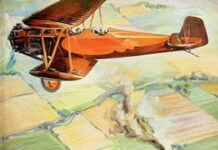The American Nuclear Powered Airship Program
President Dwight Eisenhower addressed the United Nations on December 8, 1953, when he argued the need to stop nuclear weapon proliferation. He hoped to see atoms used for peace, although his dream went largely unfulfilled.
Nuclear power for flight had intrigued the U.S. throughout the Cold War. It would help maintain a round-the-clock defensive presence, armed with powerful nuclear weapons in case the Soviet Union threatened imminent attack.
F.W. Locke Jr investigated the feasibility of using nuclear power in an airborne early-warning (AEW) airship to guard against a Soviet first strike in 1954. In headline terms he suggested:
- A rigid airship with 2-million cubic-foot helium capacity
- Twin T56 gas turbine engines modified for nuclear propulsion
- Able to remain on station even in bad weather.
- Capable of 115 mph, 25 percent faster than previous dirigible
- An outer envelope containing a long-range, high-resolution radar array
F.W. Locke Jr’s Preliminary Study of a Nuclear Airship
The U.S. Navy Bureau of Aeronautics published F.W. Locke Jr’s preliminary study into a nuclear-powered airship in April, 1954. This seemed a logical extension to the emerging nuclear age. The idea of an airborne early warning (AEW) fleet flying for years without refueling would have distinct military advantages.

https://apps.dtic.mil/dtic/tr/fulltext/u2/358153.pdf
The authors of the report envisaged the following specification for the first nuclear-powered airship:
- Gross Weight 120,000 lb, military load 30,000 lb
- Crew 30, cruising speed 115 mph, cruising altitude 10,000 ft
- Volume of envelope 2,000,000 cu ft, power requirement 4,500 hp
- Propulsion 2 T-56 gas turbines modified for nuclear propulsion
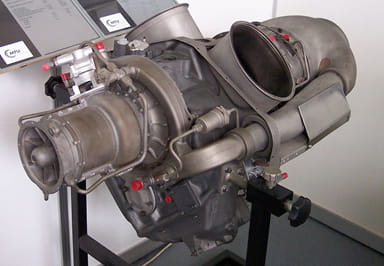
https://en.wikipedia.org/wiki/Allison_Model_250#/media/File:Allison_(MTU)_250_C20B.jpg
The preliminary report compared its proposals with an aborted sister program developing nuclear-powered AEW flying boats and produced the following table:
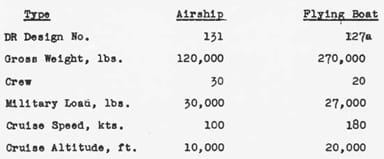
https://apps.dtic.mil/dtic/tr/fulltext/u2/358153.pdf
The author of the report felt the crew comforts on the larger airship would be superior. But they considered more work was needed into the merits of rigid v semi-rigid v blimp-type construction. And the information concerning nuclear power plants was insufficient.
However, they did apply their minds to load weight and distribution in detail:
- They thought the amount of nuclear shielding could be appreciably reduced by keeping crew a distance from the reactor
- They decided to mount the reactor and propulsion system in the center of the vessel for balance

https://apps.dtic.mil/dtic/tr/fulltext/u2/358153.pdf
The report mentions several ‘BU Plans’ considered part of the document but these are lost in the mists of time. It recommends a rigid airship design, with the turbines and reactor positioned amidships for strength and stability. Crew facilities would be generous because of long flights. There was talk of using the entire forward half for crew exercising and recreation.
Airships in American Contemporary Imagination
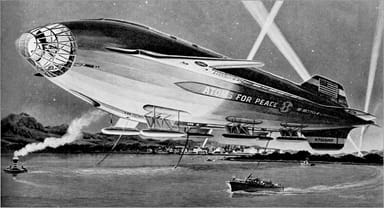
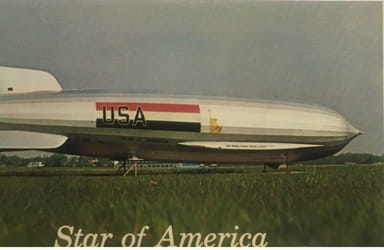
U.S. President Eisenhower was however not convinced the idea was feasible. He redirected the project to launching the first nuclear power merchant ship NS Savannah in 1959.
Further Reading:
F.W Locke Jr’s Preliminary Study
Nuclear Airship Research Projects
U.S. President Eisenhower was not convinced the idea was feasible. He redirected the project to launching the first nuclear power merchant ship NS Savannah in 1959. This foundered in the high costs of nuclear in 1971, as might have likely sunk the nuclear airship project.
Goodyear had several attempts to breathe new life into nuclear airships. They had the capability to do this. However, the military imagination had moved on, but not the mind of the public.
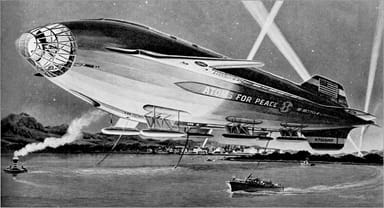
https://www.flickr.com/photos/dlberek/4981420966/in/photostream/





